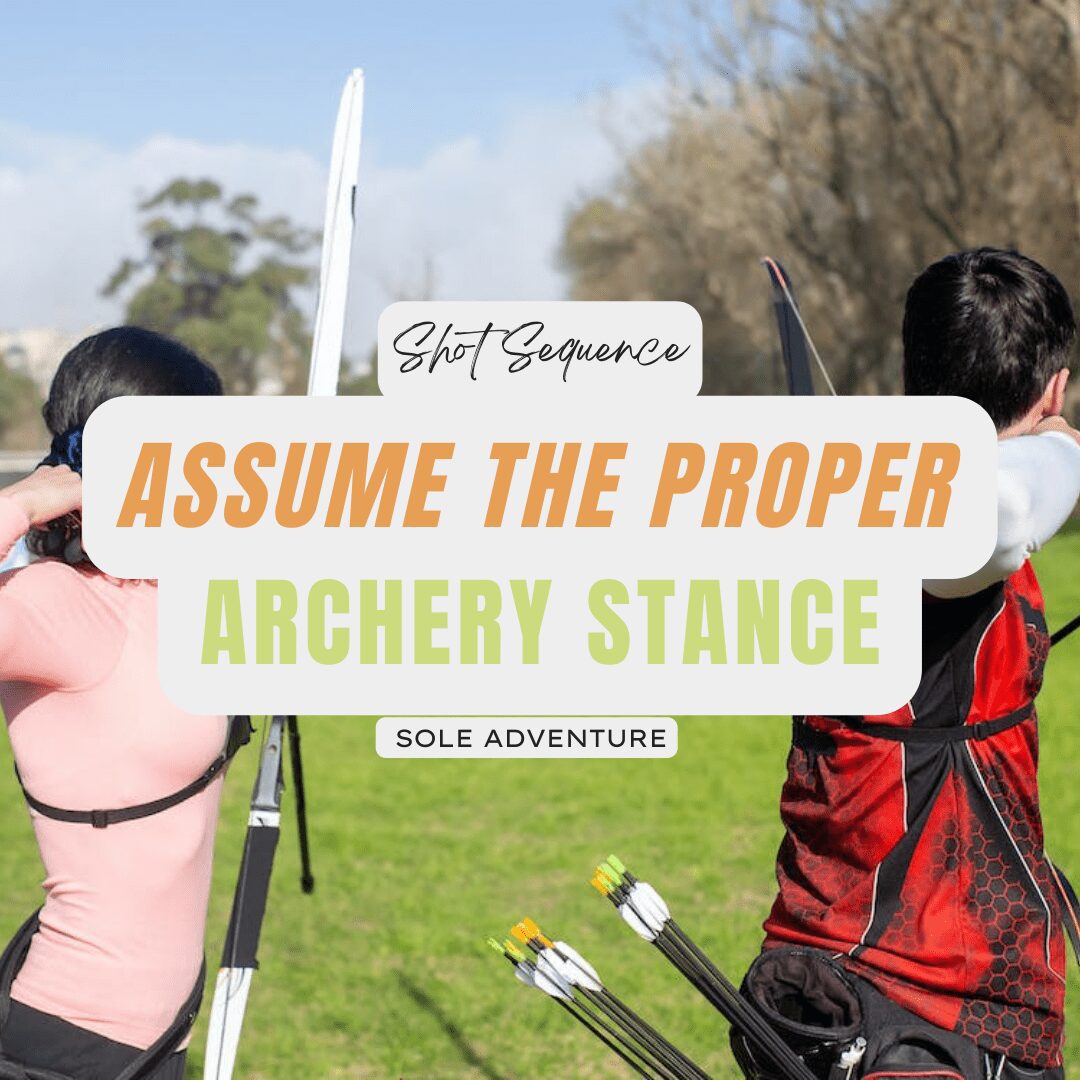This article will teach you how to position your body in the basic archery stance. A proper posture is the first step of the shot cycle. It is crucial to assume a comfortable shooting position if you want to give yourself the best chance to succeed.
Achieving proper form is a vital step in your journey to becoming an accomplished shooter, but it requires consistency; all aspects of your shot need to be in a state of working together to produce a perfect arrow release every time. Finding your shooting stance will take some trial and error.
Contents
SQUARE STANCE: Beginners should start with the classic archery stance
The square stance is perfect for beginners learning archery because it's easy to understand, achieve consistently, and doesn't affect accuracy.

A good stance looks like this: your hips and shoulders are in line with the target or aligned perpendicular to it.
Adopting a square stance before learning other variations (*, for example, the open) will often produce tighter arrow groups and accuracy compared to adopting the others at first. And this will help to enjoy the learning process more.
Here is how to do it right!
Why choose a Squared stance
- It is simple and efficient.
- Achieving proper shoulder alignment more easily.
- If you are not flexible enough around the torso and back, this stance may help, as it requires less torso rotation.
- Shooting with a square stance requires less strength.
Why you should not choose a squared stance
- It can be less stable (when windy, for example) because of the narrower base.
- As it requires less strength, you can become lazy and neglect to activate your core muscles.
Open Stance: The more advanced stance

This archery stance requires placing the feet in such a way that you face the target more with your whole body. That’s why we call it ‘open.’ Here is how to execute it properly.
Why you should choose an open stance
- When correctly performed, the open stance provides more stability, which is advantageous when in the wind.
- It can get you in a better position with less effort by achieving proper shoulder alignment.
- If your right leg is where you prefer to rest the bow limb.
Why you should not choose an open stance
- It is easier to lean forwards or backward until you learn the proper vertical posture.
- It requires more strength and flexibility in the upper body and is more stressful for your lower back.
How to find your stance if you are a beginner
I prefer the Square stance because it's a solid solution that'll help you keep everything balanced. Unless you experience any issues, stick with the Square stance!
But if you want to experiment with the different stances, here is how.
Start by setting the target at a close distance, getting on the shooting line, and assuming a neutral stance.
Now grab your bow and aim the arrow at the center of the target. Then close your eyes for 10 seconds and check where your aim is when you open them.
Two positions are important for now: left and right. Continue to experiment until you find consistent results.
You should align your body naturally without conscious effort when you're at full draw.
If you try to force your body into a different position, you will have to use a lot more muscle strength to maintain stability, as this is the position your body prefers.
Consequently, realign your feet until your body's natural alignment keeps your focus where it needs to be when you close your eyes.
How to practice your archery stance?
To improve your archery stance, I suggest you dedicate 2 or 3 practice sessions to this shot cycle step. Once you feel comfortable, move on to step two.
1. Improve your strength and muscle memory through repetitive training
An archery stance is a position in which you stand to shoot arrows. Choose the number of repetitions you want to focus on to improve your stance or basic archery skills.
The more time you spend actively and mentally working on your overall posture, COG, and stability, the better awareness you will have of this.
The number of arrows shot by archers varies significantly. Professional archers can fire up to 120 arrows in a session, while amateur or recreational archers may shoot less than 50.
When new archers train to improve their form, 1-1/2 hours of bow shooting is usually the most they can handle their first time out.
In large groups, that translates to about 30-35 shots.
So, on the first day, when you start to practice archery, you should aim to do 30 repetitions. On the second and third days, increase your practice repetitions and time.
2. Stay Focused
Focus on the basics to make the best use of archery practice. It will be a waste of time if you don't keep your concentration at this level.
With each arrow shot, focus on the individual steps of the basic archery stance
Staying focused is the only way to develop proper form and technique in archery.
Work your way up with practice sessions, especially if you are new to the exercise. The more familiar your body becomes with exercising, the longer you can go and how many repetitions you can do.
If you're more focused on your score or how close you are to the target, then it means that you're not concentrating on improving your stance.
Successful archers focus solely on how they execute their basic stance because this is where all the power for their shots comes from.
What I recommend doing
Practice shooting at a blank bale or target mat during your sessions. This will make you less distracted by scores and allow you to sharpen your focus on the process of aiming.
The inherent goal is to develop the skills with which you are currently working, thereby making progress toward the goals that those skills support.
3. Practice everywhere - even at the workplace
If you are not at the range or somewhere where you can shoot, take a minute to practice in your head. Focus on the steps and visualize what it would be like to have a bow in your hand.
Use something like a piece of chalk or marker to form an imaginary *shooting* line on the floor, giving you a visual point of reference.
Follow each of the steps outlined above in your head, and you'll do great.
The entire process needs to be repeated for at least 10 minutes to achieve success and long-term results.
4. Use a mirror
Rehearsing in front of a mirror is an effective way to improve your technique; even professionals use this technique. Draw your bow without an arrow and look if you're standing in the correct position. If some details are out of place, you can work on them and check again.
5. Use a camera or your phone to film yourself.
It can be hard to get the proper form when you're mirrorless. Make sure to either record yourself or ask a friend for help. You might forget all these tips when you return to the range because there are so many distractions, which is why seeing yourself on video can help.
It's easy to forget things that went wrong at the range. But when you're back home, it's much easier to analyze what went wrong and what went right if you have footage. Coaches often use this coaching technique with their trainees to show them their mistakes.
6. Get feedback from a coach or experienced archer
Archery coaches provide valuable tips that you can use to improve your form. Always listen to advice from experienced archers only, and avoid following somebody's tips blindly.
What works for other archers won't work for you. But it may not hurt to try a new technique, either. Make sure not to try new things all the time because, as a beginner, you need to be consistent with your form.
To conclude step 1 of the shot sequence.
Your archery stance is what supports your shooting position. Keeping a consistent posture and being mentally focused can help you shoot with reliability. Keep practicing until your stance feels completely natural. You will notice that the tightness of your shots improves with every attempt.


